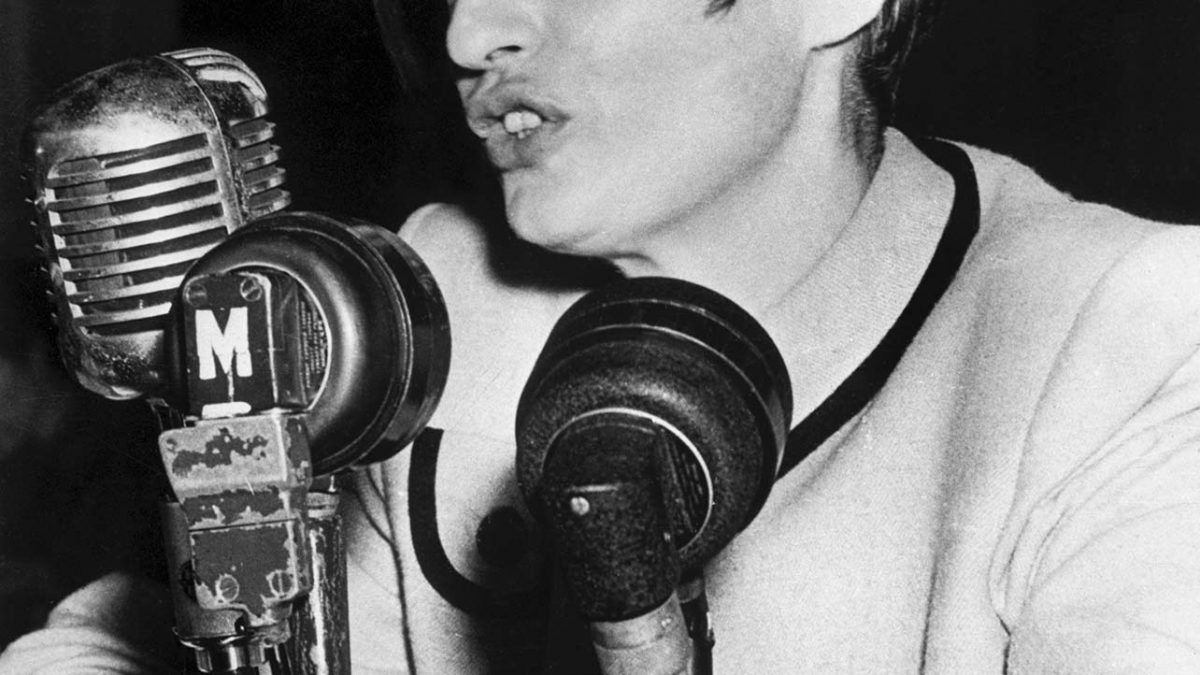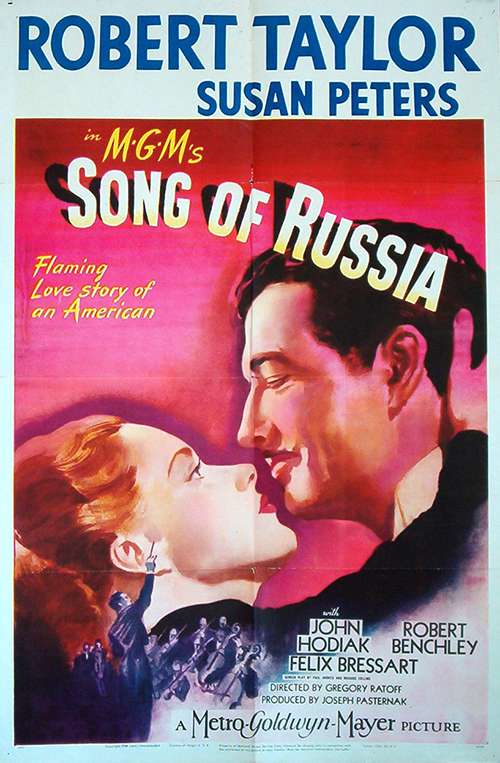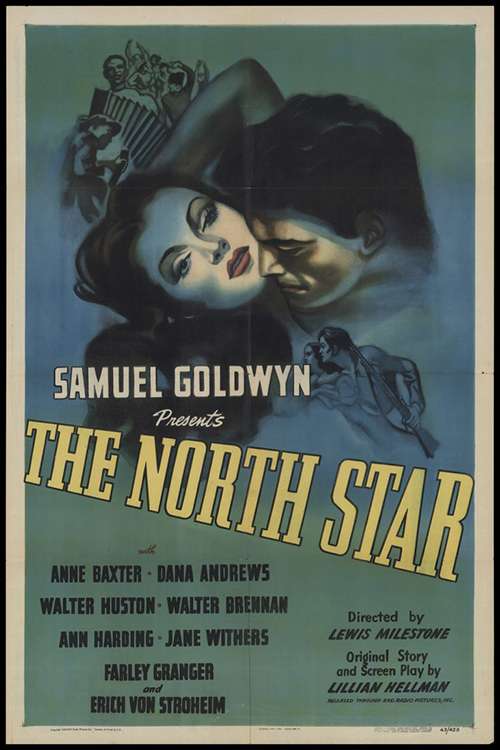House Committee on Un-American Activities
The Life and Death of a Hollywood Blacklist
Sometimes censorship is a public-private partnership.

Ayn Rand was a blacklist truther. The novelist and screenwriter had been a friendly witness during the House Committee on Un-American Activities' 1947 hearings on Hollywood subversion—the probe that prompted the studios to announce that they would not hire Communists. But when she was asked about her testimony two decades later, she claimed that the blacklist was a myth.
"I do not know of any red blacklisted in Hollywood," Rand told a Boston audience in 1967. "I do know, if the newspaper stories can be trusted, that many of those 'blacklisted' people…were working in Hollywood thereafter under assumed names." The real victims, she insisted, were the hearings' friendly witnesses. "You talk about the blacklisting of reds. I don't know of one leftist who has suffered for his views, and conversely, I don't know of one pro-capitalist who in one form or another did not have to suffer for his views."
This was misleading, to put it mildly. The blacklist really did exist. It was an organized effort to remove people from the movie industry for their political opinions, and the federal government played a major role in launching it. Anyone who cares about free expression should object to that sort of censorship by proxy, both as it manifested itself in the early days of the Cold War and as it threatens to re-emerge in social media today.
Yes, some of the more talented blacklisted writers continued to find work under assumed names or behind fronts. Dalton Trumbo knew how to write a movie that audiences would pay to see, and so Trumbo's screenplays remained in demand. But others didn't do studio work for a long time or left the industry altogether. (Blacklistee Alvah Bessie wound up taking a job as stage manager in a San Francisco nightclub and writing novels on the side.) And even folks like Trumbo found themselves getting paid a lot less. The blacklist eventually dissolved, but that took years. It is simply untrue that no Communists, real or alleged, lost work because of it.
On the other hand, it is true that some of the friendly witnesses of '47 fared pretty badly. Rand mentioned a few examples at that Boston speech, among them Morrie Ryskind, who worked for those other Marxes when he scripted three Marx Brothers movies. "In Hollywood, he was getting $3,000 a week, which at the time was top money for writers," she said. But "he has not worked as a writer one day since appearing as a friendly witness." In Show Trial (Columbia University Press), his engrossing new book about those hearings, the Brandeis historian Thomas Doherty lists several examples of his own, from Jack Moffitt, who stopped getting hired to write motion pictures and fell back on reviewing movies for The Hollywood Reporter, to Fred Niblo Jr., who wound up leaving Hollywood to write religious films for television and documentaries for the State Department. In risk-averse Hollywood, anyone who stuck his head out might lose work for his trouble, especially if he came from the low end of the industry's totem pole.
But this should not be equated, Doherty writes, "with the state-coerced, institutionally enforced blacklist of Communists, fellow travelers, and stubborn liberals." That was a more fearsome and intrusive beast.

The world suffers no shortage of books about the blacklist, but Show Trial stands out for telling its story without grinding any axes. Doherty has a healthy level of wry contempt both for the Stalinists who populated the Communist Party and for the grandstanding censors who held the hearings. He feels no need to downplay anyone's foolish or malevolent behavior, whatever side they were on.
He also does a good job of explaining the House probe's historical context. Red scares often intersect with a war within or against a union, and Doherty ably details the labyrinthine labor conflicts of 1930s and '40s Hollywood, which culminated in a fierce and violent struggle between the left-wing Conference of Studio Unions and the mobbed-up International Alliance of Theatrical Stage Employees. Doherty also describes three World War II–era movies whose shadows loomed large over the hearings: Mission to Moscow (1943), The North Star (1943), and Song of Russia (1944). These wartime valentines to the Russians were made in response to the Office of War Information's call for films that "emphasize the might and heroism of our Allies." In Doherty's words, "All were ardently pro-Soviet, all were shamelessly dishonest in their depiction of the Communist system, and all seemed like a good idea at the time." Mission to Moscow was an especially egregious piece of propaganda, going so far as to defend Stalin's purge trials.
Having set the stage, Doherty gives us a day-by-day account of the hearings, deftly juggling a large cast of characters. In the process, he covers a rather wide range of perspectives beyond the Leninist loyalists in the spotlight and the proto-McCarthyists leading the charge against them. There are, for example, the Hollywood liberals of the Committee for the First Amendment, who tried to distance themselves from Communism as they denounced the federal investigation. (At the group's first meeting, at songwriter Ira Gershwin's house, spies from Warner Bros. wrote down the attendees' license plate numbers. They passed their findings along to the FBI.) A number of conservative voices took a similar position of opposing the probe without embracing the reds, as when the reliably Republican New York Herald Tribune called the hearings a "witch hunt," editorializing that "the beliefs of the men and women of the screen are, like the beliefs of any ordinary men and women, nobody's business but their own." Howard Hughes, fresh from his own brush with congressional investigators (these ones probing his wartime contracts), asked the Committee for the First Amendment if they'd like to fly from Los Angeles to D.C. free of charge in one of his airplanes. (They opted to charter a plane instead, lest someone accuse them of being Hughes' puppets.)
Anyone who cares about free expression should object to censorship by proxy, both as it manifested itself in the early days of the Cold War and as it threatens to re-emerge in social media today.
Though the worry at the heart of the hearings was that Communists were planting propaganda in the movies, the investigators spent relatively little time discussing just what these messages might be—and when they did get to specifics, the testimony sometimes got a little ridiculous. When Rand tore into Song of Russia, as clear-cut a case as you'll find of pro-Kremlin propaganda, she somehow managed to get drawn onto a tangent about whether children ever smile in the Soviet Union. "If they do," she assured the committee, "it is privately and accidentally."
It wasn't the most fruitful approach to the issue. Not that it was the government's business, but there certainly were a number of radicals writing, acting, and directing in Hollywood in this era. Indeed, the recent trend in left-wing histories of the period isn't to deny that they were slipping messages into their movies but to celebrate it. "Had the moguls and the congressmen the wit to see it, the evidence was right before their eyes," Doherty writes, summarizing these historians' position. "Look not to the pro-Soviet troika of World War II or the preachy social problem films of the postwar era, but to the shadowy netherworld of film noir, where brutalist melodramas like Body and Soul (1947), Brute Force (1947), and Force of Evil (1948) whispered that something really was rotten in the heart of America."
That they did. Force of Evil, directed and co-scripted by blacklistee Abraham Polonsky, basically beats the viewer over the head with the idea that organized crime is just another face of monopoly capitalism. ("What do you mean, 'gangsters'?" one character declares at one point. "It's business.") And it wasn't just noir. In their 2005 book Hide in Plain Sight: The Hollywood Blacklistees in Film and Television, 1950–2002, the cultural historians Paul Buhle and Dave Wagner note that blacklisted writers managed even to insert political themes into children's animal movies, which lent themselves well to underdog narratives. In 1956, for example, Dalton Trumbo (writing as "Robert Rich") worked a little dialogue into The Brave One in which a "boy learns about the history of his Mexican people and how illiterate Indians won a nation's freedom from the armies of European aristocrats."
Needless to say, that unobjectionable history lesson is pretty far from the noxious politics of Mission to Moscow. The most interesting question about the "propaganda" of the old Hollywood left isn't what messages anyone intended to add to the movies; it's what audiences actually took away from the films. Communism that's been translated into Hollywood terms doesn't always look so red on the screen. As the independent historian Bill Kauffman once commented, when communist filmmakers had to work "within studio straightjackets," they often "channeled their work into 'populist' avenues (the small banker fighting the big banks, the lone man against the crowd) and wound up sounding libertarian."
Take 1958's Terror in a Texas Town, a Western best known today for a gloriously weird showdown that pits a gunman against a man armed with a whaling harpoon. Here the blacklisted Trumbo (working behind a front) wrote a story in which a wealthy businessman used both private violence and a corrupt government to seize property from independent farmers. I can see why a Marxist would like the movie, but a Randian might appreciate it too. Who exactly was subverting whom?
The hearings of 1947 had their biggest effect a little more than a month after they ended. About 50 executives, producers, and lawyers met at the Waldorf-Astoria Hotel in New York, then emerged with the Waldorf Declaration, which stated that the studios "will not knowingly employ a Communist or member of any party or group which advocates the overthrow of the government of the United States by force or by any illegal or unconstitutional methods."
There are obvious parallels between this blacklist and the Hays Code, a self-censorship system that governed Hollywood from the 1930s through the 1960s. Both the blacklist and the code were created and administered by private entities, but neither would have existed—or, at least, neither would have had real teeth—were it not for government pressure. The most notable difference is that the latter, whose rules sharply limited how filmmakers could depict everything from sex to crime to faith to the flag, policed what was on the screen rather than who was working behind the scenes.
It was therefore easier to quietly evade the rules of the blacklist than to quietly violate the code. There was an obvious incentive for such evasions, too. During the negotiations that led to the Waldorf Declaration, Doherty writes, producer Sam Goldwyn threatened "to hire some of the Communists who were fired and thus 'pick up some good talent' on the cheap." The other studio bosses reeled Goldwyn in, but his comment was a pretty good prediction of how the blacklist eventually unspooled.
During the negotiations that led to the blacklist, producer Sam Goldwyn threatened "to hire some of the Communists who were fired and thus 'pick up some good talent' on the cheap."
First a few blacklistees were able to work behind pseudonyms or fronts. After about a decade, some productions were bold enough to publicly hire them, or at least some of them. (Trumbo had to conceal the fact that he'd written Terror in a Texas Town, but blacklisted actor Ned Young got a juicy part with full credit.) By 1960, Otto Preminger and Kirk Douglas were able to make a big deal of openly tapping Trumbo to script Exodus and Spartacus, respectively—but when Frank Sinatra then said that blacklistee Albert Maltz would be adapting William Bradford Huie's book The Execution of Private Slovik into film form, a backlash forced him to backpedal. It would be a few more years before the blacklist unraveled completely, and a few years past that before Hollywood started making self-congratulatory films about how bad the old days had been.
Even then, Doherty can find no evidence that the Motion Picture Association of America ever formally revoked the Waldorf Declaration. As best as he can tell, it simply became a dead letter.

In the Trump era, the target of choice for people worried about foreign subversion—and other disfavored speech, from "fake news" to sex ads—is social media. "You created these platforms, and now they're being misused," Sen. Dianne Feinstein (D–Calif.) told representatives from Facebook, Google, and Twitter during last year's hearings on Russian activities during the 2016 election. "And you have to be the ones who do something about it—or we will."
As tech companies create ever-more-intrusive rules about what can and can't be said using their products, threats like Feinstein's clearly play a substantial role in their decision making.
That's not to say the threats are all pushing them in the same direction. Then–Sen. Al Franken gave an unintentionally funny speech to the Open Markets Institute last year. Big tech, he complained, has "failed to take commonsense precautions to prevent the spread of propaganda, misinformation, and hate speech." These platforms, he declared a little later, "should be 'neutral' in their treatment of the flow of lawful information." It is obviously difficult to simultaneously treat speech neutrally and not treat speech neutrally, but Franken didn't seem to see the tension between these two rather different critiques of Silicon Valley.
But that too has a precedent. At the same time that a congressional committee was pressuring Hollywood to crack down on Communists, the Department of Justice was prosecuting the same studios for antitrust violations. "If the producers acted together," Doherty notes, "they were conceding that the studios were in cahoots, conducting a conspiracy in restraint of trade." The studio bosses stewed about the double bind, but they went ahead with the blacklist. (They also lost the antitrust case. But in retrospect, that would have happened either way.)
As a result, Hollywood radicals missed out on work, got paid less for the work they did do, and sometimes humiliated themselves trying to get into the industry's good graces. If Rand really didn't "know of one leftist who has suffered for his views," she was poorly informed. She did at least acknowledge the so-called Hollywood 10—eight Communists and two ex-Communists who were cited for contempt of Congress after they refused to say whether they had ever belonged to the party. They were hard to miss, since they wound up in jail.
J. Parnell Thomas, the Garden State congressman who had chaired the hearings, ended up in jail too: In 1948 he was busted for kickbacks, fraud, padding his payroll, and other hallmarks of Jersey politics. And then, in a coincidence that could have been ripped from a corny liberal message-movie, he landed in the same prison as Lester Cole, one of the Hollywood 10.
There, Cole was put to work cutting hay while Thomas labored in the prison chicken coops. One day, Doherty reports, Thomas yelled over to Cole: "Hey, Bolshie, I see you still got your sickle. Where's your hammer?"
Cole yelled back: "Just like in Congress, you're still picking up chickenshit!"
This article originally appeared in print under the headline "The Life and Death of a Hollywood Blacklist."


Show Comments (150)